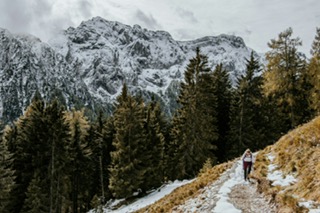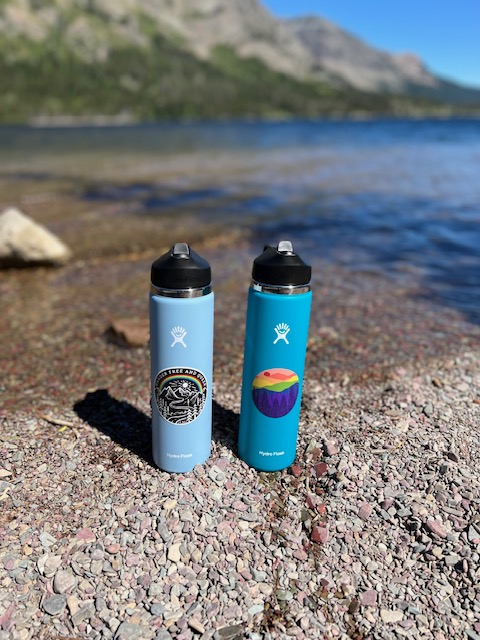Disclaimer: This article may contain affiliate links. When you click these links, I may get a small commission. It won’t cost you anything but helps me run this site. I only promote products that I think are great.
Winter hiking offers a unique and serene experience, transforming familiar trails into a wonderland of ice and snow. However, this beautiful transformation also brings new challenges. Here are essential tips for a safe and enjoyable winter hiking adventure.

1. Dress in Layers
Layering is crucial for winter hiking. Start with a moisture-wicking base layer to keep sweat away from your skin. Add an insulating layer, like fleece, to retain body heat. Top it off with a waterproof and windproof outer layer. Remember, it’s easier to remove a layer if you’re hot than to add one you didn’t bring!
2. Choose the Right Footwear
Invest in waterproof hiking boots with good insulation. Pair them with wool or synthetic socks (avoid cotton, as it retains moisture). Consider traction devices like crampons or microspikes for icy conditions, and snowshoes for deep snow hiking.

3. Understand the Weather and Daylight
Winter weather can be unpredictable. Check the forecast before you head out and be prepared for changes. Also, daylight is shorter, so plan to start early and finish before dusk to avoid getting caught in the dark.
4. Pack Smart
Bring a backpack with essentials: extra layers. Carry plenty of water. Cold air can be deceiving. You might not feel thirsty, but it’s important to stay hydrated. Other items you will want to pack are high-energy snacks, a first aid kit, a headlamp, and a map and compass (or a GPS). A thermos with a hot drink can be a great morale booster!
5. Use Trekking Poles
Trekking poles can provide extra stability on snowy or icy trails. They provide additional points of contact with the ground, enhancing your balance and stability, which is crucial for preventing falls and injuries. Trekking poles help in distributing the weight load more evenly, reducing the impact on knees, ankles, and hips, especially when walking downhill. This is particularly important in winter when the added weight of winter gear and the challenge of moving through snow can increase the strain on joints.
6. Plan Your Route
Choose trails that are suitable for winter hiking. A great tool to utilize for this is AllTrails! AllTrails is an extensive database of trails. It makes it easier to choose trails that match your skill level. Each trail description includes distance, elevation gain, and estimated completion time. AllTrails also offers downloadable maps.
7. Know the Signes of Hypothermia and Frostbite
Recognize the early symptoms of hypothermia (shivering, slurred speech, clumsiness) and frostbite (numbness, white or pale skin). If symptoms appear, seek shelter, warm up, and if necessary, cut your hike short.
8. Leave Your Plans with Someone
Always inform someone about your hiking plans and expected return time. In case of an emergency, they’ll know where to direct search and rescue teams. To maximize the effectiveness of leaving your plans with someone, ensure you include details like your expected departure and return times, the trailhead, the route you intend to take, any side trips you plan, the equipment you’re carrying, vehicle description and parking location, and any other pertinent information. This simple step can be instrumental in ensuring your safety and well-being while enjoying the outdoors.
9. Respect Wildlife and the Environment
Winter is a critical time for wildlife. Keep a respectful distance, and follow Leave No Trace principles to minimize your impact on the natural environment. Never feed animals. Feeding wildlife damages their health, alters natural behaviors, and exposes them to predators and other dangers. Protect wildlife and your food by storing rations and trash securely.
10. Enjoy the Unique Beauty
Winter hiking isn’t just about the challenge; it’s also about the unique beauty of the natural world in its winter guise. Take time to appreciate the stillness and the crisp air.

Winter hiking is a rewarding activity that offers a different perspective on familiar landscapes. With the right preparation and respect for the environment, it can be a safe and exhilarating experience. So, bundle up, and get ready to step into a winter wonderland like no other!



